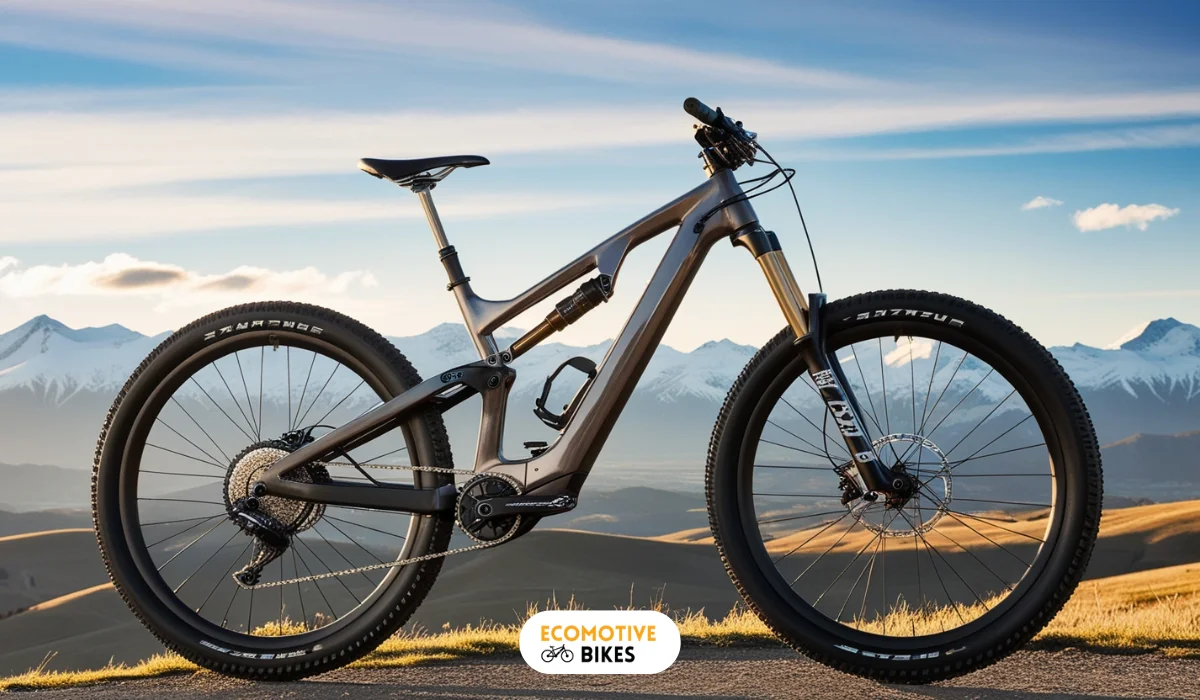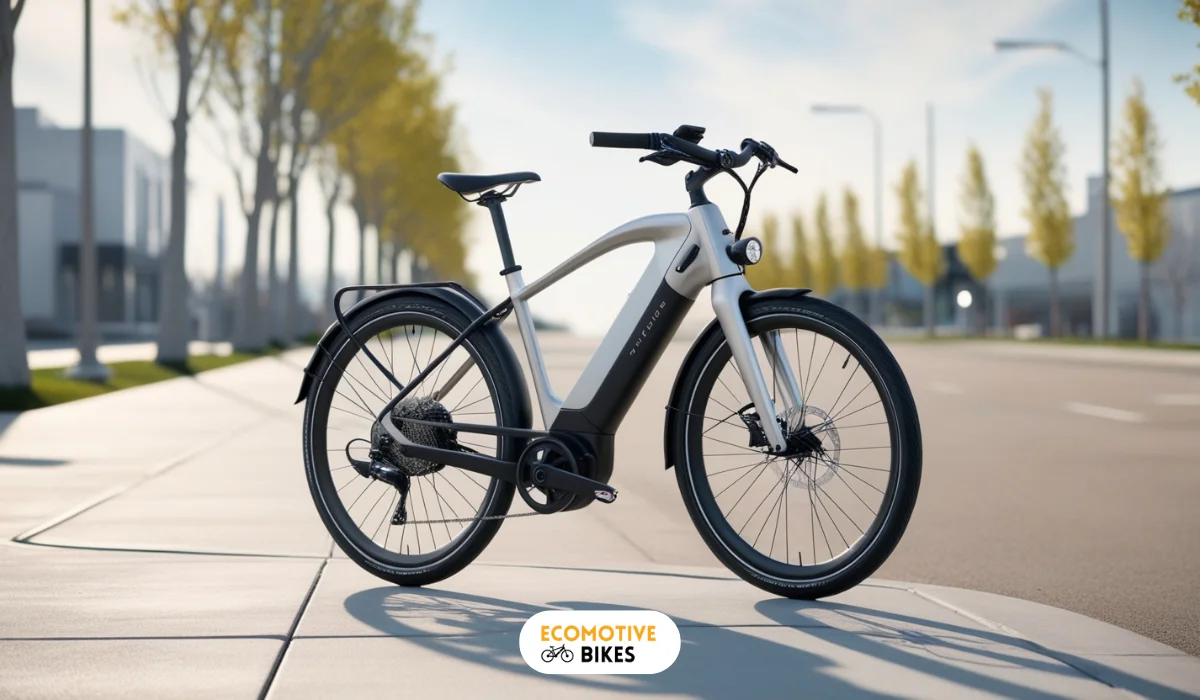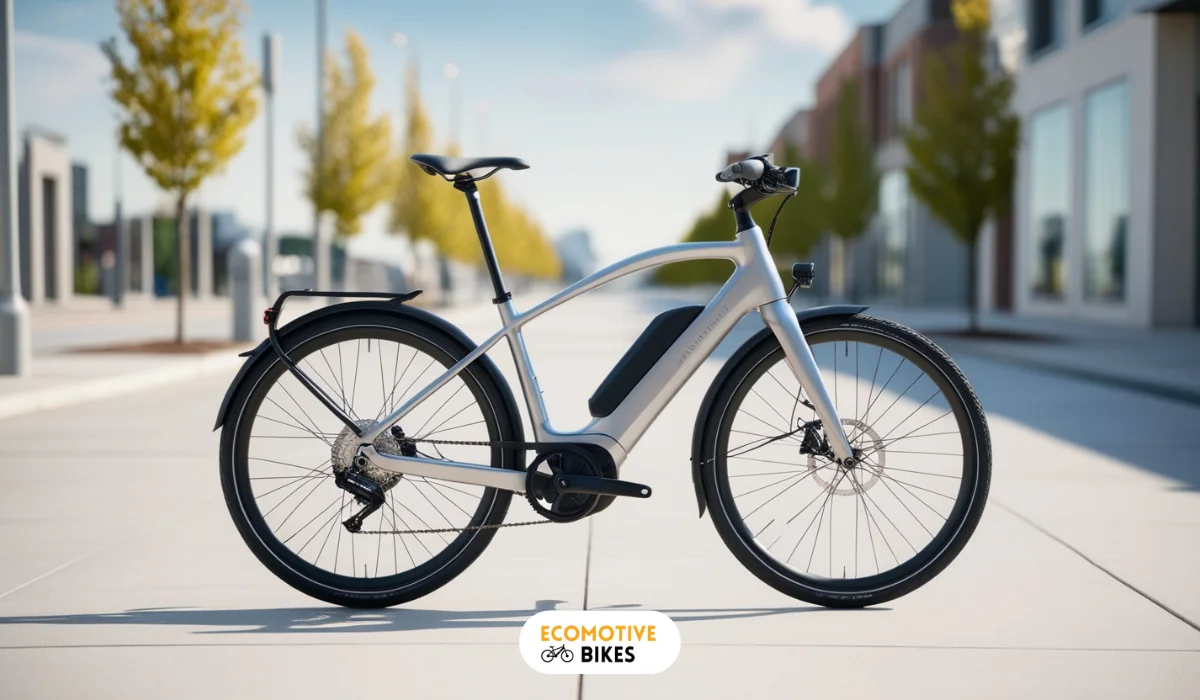What are the types of e-bike batteries?
Explore what are the types of e-bike batteries: Lithium-Ion, Lithium Iron Phosphate, and Lead-Acid. Know their pros, cons, and find the best fit for your e-bike.
Table of Contents
Related Articles:
What fuels your electric bike adventures? E-bikes rely on the powerful batteries. But not all batteries are created equal! So, what are the types of e-bike batteries and how do they impact your ride? Let’s explore the answer to the question and unveil the varieties of e-bike batteries, each with its own strengths and weaknesses.
From lightweight champions to range rulers, discover the perfect battery to match your e-bike ambitions!
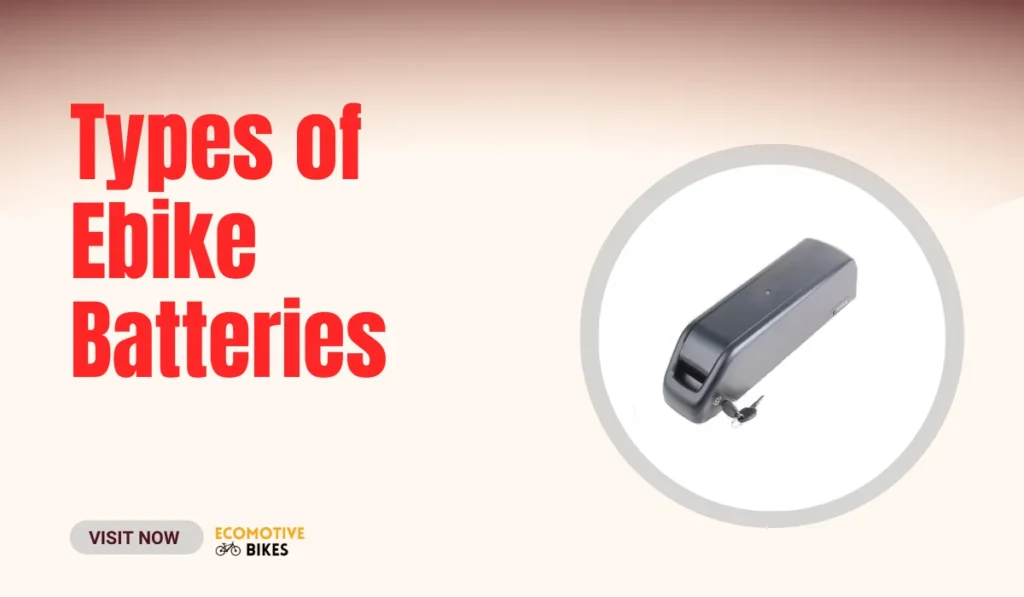
What is the significance of a right e-bike battery?
Battery reigns supreme as the lifeblood of the entire electric bicycle. The component directly impacts your ride’s speed and duration. It dictates how far and how fast you can ride. Opting for the right battery significantly impacts efficiency and the distance you conquer on a single charge. Even with similar size and weight, battery performance can vary significantly.
What are the different types of e-bike batteries?
The e-bike revolution has been fueled by ever-evolving battery technology. Today, varieties of batteries are available catering to diverse needs and riding styles. From lead-acid to lithium-ion, each option boasts unique advantages and drawbacks, influencing factors like weight, capacity, lifespan, and cost. This deep dive will unlock the intricacies of these battery types, empowering you to select the perfect partner for your electric adventures. So, let’s explore the most popular contenders in the e-bike battery arena.
The common e-bike batteries are:
- Lithium-ion batteries
- Lithium-polymer batteries
- Nickel-metal hydride batteries
- Lead-acid batteries
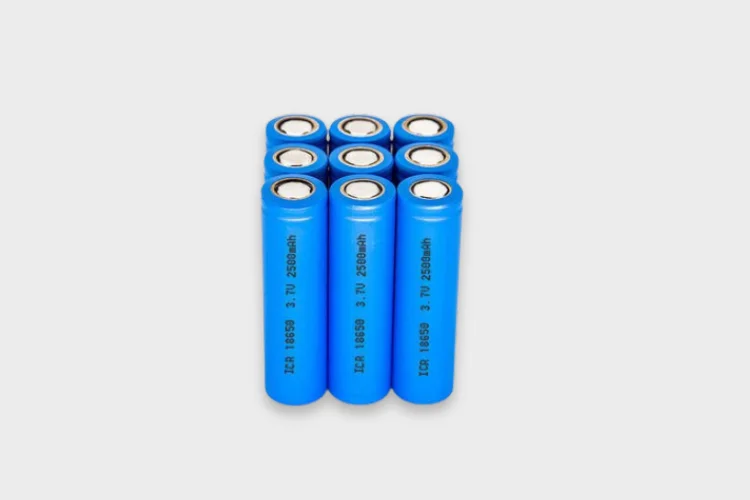
1. Lithium-ion battery
These are the most popular type of e-bike battery, accounting for more than 90% of the market, for a reason. This battery type is made from lithium and comes in three configurations to fit your e-bike battery pack. They offer a high energy density, meaning they can store a lot of energy in a small and lightweight package. They also have a long lifespan and durability and can be recharged many times. However, they are the most expensive type of e-bike battery.
Pros
- Unmatched energy density.
- Exceptional lifespan of 300-500 charge cycles.
- Low maintenance.
- Lightweight design enhances maneuverability and overall handling.
- Durable.
Cons
- Require a battery management system (BMS)to regulate charging and discharging cycles.
- Higher initial cost.
- Production and disposal cause high environmental impact.

2. Lithium-ion Polymer Batteries (LiPo)
Lithium-ion Polymer (LiPo) batteries are a variation of Li-ion batteries with a slightly higher energy density and are even lighter weight. They are made from the electrolyte of the lithium polymer. LiPo batteries are rechargeable and excel at delivering high-power bursts (fast discharge at higher C-rates). This can be particularly attractive for riders seeking to optimize weight distribution or extend their range on a single charge. While LiPo technology offers the potential for weight savings and extended range, these batteries typically carry a higher price tag and may exhibit lower overall stability compared to Li-ion options.
Pros
Lightweight and flexible design enhances maneuverability and compatibility with e-bike frames.
- High current with lower internal resistance initiates quicker acceleration with smoother power delivery.
- Impressive energy density translates to a potentially extended range on a single charge.
- Ideal for riders seeking to maximize their exploration potential.
- Low self-discharge minimizes energy loss when not in use.
- Fast charging capability.
- Reliable lifespan, typically enduring 300-500 charge cycles
Cons
- High cost than Li-ion batteries.
- High fire risk compared to Li-ion batteries
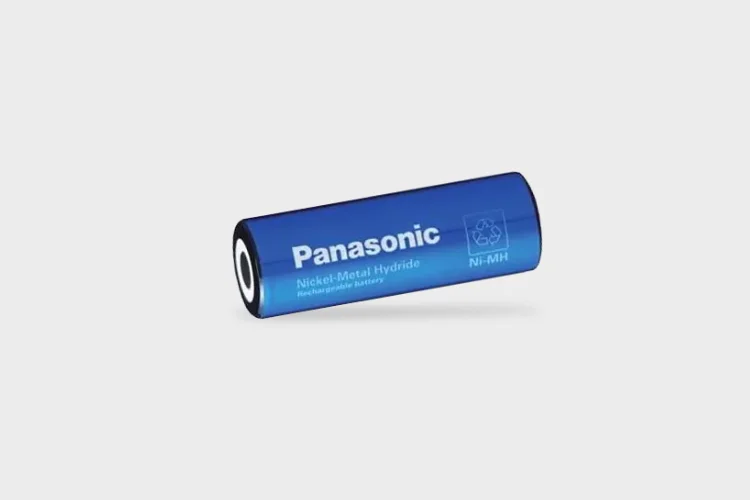
3. Nickel-metal Hydride battery (NiMh)
While largely superseded by Lithium-ion technology, Nickel-Metal Hydride (NiMH) batteries retain a niche within the e-bike industry. These were once a popular option for e-bikes. Their primary advantage lies in cost-effectiveness compared to their more advanced counterparts. However, they have a lower energy density and a shorter lifespan. Consequently, NiMH batteries are now primarily found in budget-conscious e-bikes or as backup options for riders seeking a spare power source.
Pros
- NiMH batteries boast a superior safety profile, minimizing potential risks.
- Reduced environmental impact.
- Retain their charge for extended periods when not in use.
- Impressive lifespan of 500-1000 charge cycles.
- Suitable for seasonal riders or those with unpredictable usage patterns.
Cons
- Heavier and bulkier design.
- Lower energy density.
- Limit the potential range.
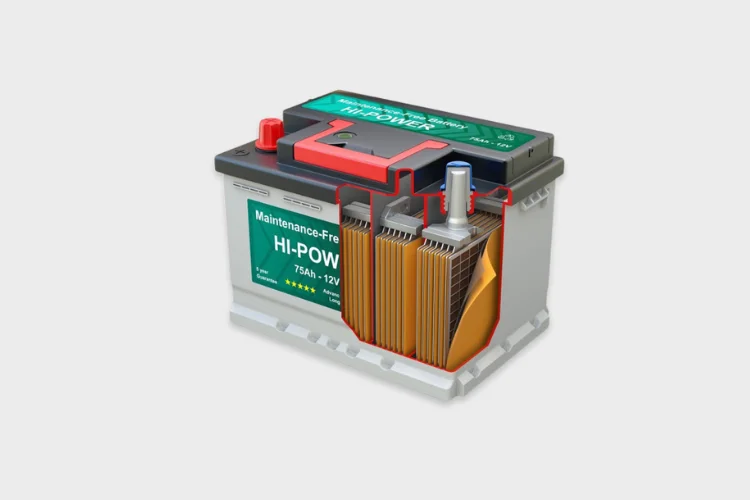
4. Lead-acid battery
Lead-acid batteries, while the oldest and most affordable option for e-bikes, come with significant trade-offs. They boast a simple design and easy recycling, but their weight is a major drawback. These batteries are significantly heavier than Lithium-ion or Nickel-Metal Hydride options, impacting overall e-bike weight and handling. Additionally, their energy density and lifespan are lower, leading to shorter ranges and replacements that are more frequent.
A lead-acid battery’s maximum capacity is half that of a lithium or nickel battery. While these limitations have relegated them to a niche role in modern e-bikes, their affordability may still appeal to budget-conscious riders.
Pros
- Cost-effective choice among e-bike batteries.
- Decent power potential.
- Easily and widely available.
- Suitable for riders who prioritize basic functionality
Cons
- Heavy weight negatively impacts the handling and maneuverability.
- Lower energy density initiates shorter ranges on a single charge.
- Higher self-discharge rate, i.e., lose stored energy even when not in use.
- Longer charging time.
- Shorter Lifespan of 200-500 charge cycles.
How to maintain your e-bike battery?
For an optimized e-bike experience, prioritizing the health of your battery is paramount. Here at ecomotobikes.com, we are committed to empower you with the knowledge to maximize their battery’s lifespan and performance with these essential maintenance practices.
- Utilize the designated charger: Always employ the charger specifically designed for your e-bike battery. Third-party chargers, even if seemingly compatible, may not adhere to the exact charging specifications of your battery, potentially leading to compromised performance or safety issues.
- Strategic storage: While a certain level of degradation is inevitable over time, proper storage practices can significantly mitigate this effect. For extended storage periods, consult your manufacturer’s recommendations for the ideal charge level (typically between 30-60%). Storing a partially charged battery minimizes the potential for damage during extended periods of inactivity.
- Gentle handling: Your e-bike battery is a sophisticated piece of technology, and rough treatment can negatively impact its lifespan. Avoid excessive vibrations and shocks that can occur with aggressive riding or improper handling. Treat your battery with care to ensure continued optimal performance.
- Timely disconnection: Once your battery has reached a full charge, promptly disconnect it from the charger. Leaving it plugged in unnecessarily can contribute to premature wear and tear. Develop a habit of unplugging your battery upon completion of the charging cycle.
- Scrutinize battery claims: Exercise caution if you encounter a battery boasting an unusually high lifespan or number of charge cycles at a significantly lower price point. Such batteries may have been subjected to improper charging practices during their production or storage, potentially leading to safety concerns and a shortened lifespan. Also, prioritize reputable brands known for their adherence to safety and quality standards.
- Invest in protection: For riders, who frequently navigate cold weather conditions, invest in a dedicated battery cover. This additional layer of protection safeguards your battery against the harsh elements, potentially extending its lifespan.
Related: How to remove ebike battery?
How to choose the battery for your electric bike?
Now that you’ve explored the various battery types, here’s a roadmap to guide your selection process:
- Prioritize bike compatibility: Before diving into specific batteries, ensure compatibility with your e-bike. Consult your bike’s specifications, focusing on aspects like motor power, current, voltage, and controller type. Choosing a compatible battery is paramount to avoid damaging your e-bike or compromising safety.
- Align with your riding style: Let your riding preferences be the driving force behind your battery selection. Consider factors like:
- Desired speed: Do you crave a high-performance e-bike capable of reaching exhilarating speeds?
- Commute distance: How far do you typically travel for your daily commutes or recreational rides?
- Riding frequency: How often will you be using your e-bike?
- High-performance vs. budget-friendly options:
- High-powered adventure: If long-range exploration and impressive speeds are your priorities, a high-capacity, high-voltage Lithium-ion battery might be the perfect match. However, these batteries often necessitate a more advanced and expensive charger.
- Cost-conscious choice: For riders seeking a simpler and more affordable option, lower-capacity batteries like Nickel-Metal Hydride (NiMH) or Lead-Acid (PbA) might be suitable. However, this choice may come at the expense of speed and range, potentially requiring more frequent charging and replacements
- Research and compare brands: Investing some time in brand research can yield significant benefits. Here are some strategies to make an informed decision:
- Online reviews: Delve into online reviews of various e-bike battery brands to gain valuable insights from fellow riders.
- Local expertise: Visit your local e-bike shops and speak with knowledgeable staff. Test ride different e-bike models equipped with various batteries to feel the performance difference firsthand.
- Focus on value, not just price: The ideal battery strikes a balance between quality, performance, durability, and cost. Look for brands offering warranties, user manuals, and responsive customer service, ensuring a positive ownership experience.
Key terms for e-bike batteries you need to know:
You need to know some key terms to choose the perfect e-bike battery-voltage, amp, watt, capacity, amp-hour, and watt-hour. Below are the terms that will empower you to make informed decisions:
- Voltage (V): Think of voltage as the “push” behind electricity, similar to water pressure. Higher voltage translates to a faster flow of electrons, impacting your e-bike’s speed. While some bikes use 400 volts, it’s important to consult your specific model’s recommendations.
- Amps (A): Amps represent the current flowing through the battery, analogous to the diameter of a pipe. A higher amp rating signifies a greater volume of electricity flowing per second.
- Watts (W): Watts measures the overall power output of your e-bike. Simply put, the higher the wattage, the more power your bike delivers. Remember, watts are calculated by multiplying volts by amps.
- Watt-hours (Wh): Wh tells the story of total energy usage over time. Unlike watts, which represent power at a single moment, Wh considers the duration. Imagine comparing speed (watts) to the total distance traveled (Wh). A battery discharging at 100 watts for 2 hours would use 200Wh.
- Amp-hours (Ah): Ah defines the battery’s capacity, similar to the amount of water a container can hold. A 15Ah battery could discharge 1.5 amps for 10 hours or 15 amps for 1 hour.
- Capacity: This is the heart of it all! Capacity, measured in Ah, signifies the total amount of energy a battery can store. It’s the most crucial factor to consider, determining how long your e-bike can run on a single charge.
FAQs about e-bike battery
How long does an e-bike battery typically last?
An e-bike battery typically lasts 3 to 9 years or 500 to 1,000 charging cycles. Factors like battery type, usage patterns, maintenance, and storage conditions can influence its lifespan. Regular care, such as keeping the battery clean and avoiding extreme temperatures, can help maximize its longevity.
Can e-bike batteries overheat and cause fires?
Yes, e-bike batteries can overheat and potentially cause fires, particularly if they are damaged, poorly maintained, or exposed to extreme conditions. To minimize risks:
Use the charger provided by the manufacturer.
Avoid overcharging the battery.
Store batteries in a cool, dry place.
Regularly inspect for damage and wear.
How can I maintain a healthy e-bike battery?
To maintain a healthy e-bike battery, keep it charged between 20% and 80%, and avoid full discharges. Store in a cool, dry place, and avoid extreme temperatures. Use the manufacturer’s charger and regularly inspect the battery for damage. Clean it with a damp cloth, ensuring it stays dry and free from corrosion.
How can I check my e-bike battery’s health?
To check your e-bike battery’s health, monitor its charge level and range consistency. Many e-bikes have built-in battery management systems (BMS) that show health status via an app or display. Regularly inspect for physical damage, swelling, or excessive heat. A voltmeter can also measure voltage stability.
Can e-bike batteries be repaired?
Yes, E-bike batteries can sometimes be repaired, but it depends on the nature and extent of the damage. Common repairs include replacing individual cells or fixing the battery management system (BMS). Always seek professional help for repairs, as improper handling can be dangerous. In some cases, replacing the battery might be more cost-effective and safer.
How do I know when to replace my e-bike battery?
You should consider replacing your e-bike battery if you notice significant drops in range, the battery takes longer to charge, or it fails to hold a charge. Physical signs like swelling, leaks, or excessive heating also indicate that replacement is necessary. Regularly checking the battery’s performance metrics through the bike’s display or an app can help determine its health.
What are the most common types of e-bike batteries?
The most common types of e-bike batteries are:
Lithium-ion (Li-ion): Known for high energy density, lightweight, and long lifespan. They are the most popular choice for modern e-bikes.
Lithium Polymer (LiPo): A subtype of Li-ion batteries, offering similar benefits but often with more flexibility in shape and form factor.
Nickel-Metal Hydride (NiMH): Less common today, NiMH batteries are heavier and have a shorter lifespan compared to lithium-ion options.
Lead-Acid: Cheap but heavy and with a short lifespan. These are rarely used in modern e-bikes.
Final Word: What are the types of e-bike batteries?
The world of e-bike batteries presents a compelling array of options, each tailored to address distinct rider needs. From the high-octane thrills of a long-range Lithium-ion to the budget-friendly practicality of a Nickel-Metal Hydride, each battery type offers unique strengths.
So, carefully evaluate the factors, advantages, and disadvantages of each battery type to make an informed decision. After all, with the right battery on board, you’re well on your way to unlocking the full potential of electric cycling.

